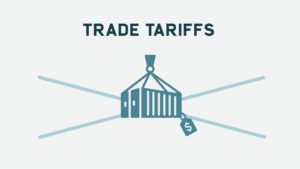
Robert Coolidge
President & CEO
‘Right to Repair’ is a term that most of the readers of this blog will be familiar with, given the media attention it has received in recent years. For those less familiar, Right to Repair refers to the movement to expand consumer’s options in repairing their personal property. Tactically, this means providing both consumers and independent third-party providers with access to the same tools, parts and documentation, made available to in-house repair teams and authorized third party repairers. The Right to Repair movement spans multiple industries (automotive, agricultural, medical devices, consumer electronics), with state-level laws passed across these industry verticals in the past year (Digital Electronic Equipment in New York, Wheelchairs and Agricultural Equipment in Colorado). In this post, I will focus on Right to Repair legislation for digital electronic equipment (including mobile, laptop, gaming), which will significantly impact some of our OEM partners at Encompass, and how we can be proactive in the solution.
Legislative Action to Date
While the Right to Repair conversation has been active at both the federal and state level over the past 2-3 years, states are leading the way by translating this conversation into legislative action:
New York’s Digital Fair Repair Act – New York’s Digital Fair Repair Act (N.Y. Gen. Bus. Law § 399-NN) is the first US state law to broadly protect a consumer’s right to repair their own Digital Electronic Equipment[1]. The law states that in the event that an OEM makes the Documentation[2], Parts and Tools[3] required for the diagnosis, maintenance, or repair of digital electronics available to its own employees or authorized providers, that OEM is required to make the same Documentation, Parts and Tools available to independent repair providers and consumers on fair and reasonable terms. These materials can be distributed either directly through an OEM or via an authorized provider.
first US state law to broadly protect a consumer’s right to repair their own Digital Electronic Equipment[1]. The law states that in the event that an OEM makes the Documentation[2], Parts and Tools[3] required for the diagnosis, maintenance, or repair of digital electronics available to its own employees or authorized providers, that OEM is required to make the same Documentation, Parts and Tools available to independent repair providers and consumers on fair and reasonable terms. These materials can be distributed either directly through an OEM or via an authorized provider.
[1] Legislation states that ‘Digital Electronic Equipment’ “means any hardware product that depends for its functioning, in whole or in part, on digital electronics embedded in or attached to the product for which the original equipment manufacturer makes available tools, parts, and documentation either through authorized repair providers, its own employees, or any authorized third-party providers.” Exempt industries include home appliances with embedded digital electronic products (including HVAC refrigerators, ovens, and microwaves), motor vehicles, electronic bikes, medical devices, security devices / alarm systems, off road equipment including power tools and garden equipment, commercial and industrial electrical equipment, and enterprise devices (B2B sales, B2G sales)
[2] Legislation states that ‘Documentation’ includes “any manual, diagram, reporting output, service code description, schematic diagram, or similar kinds of information required for effecting the services of diagnosis, maintenance, or repair of digital electronic equipment.”
[3] Legislation states that ‘Tool’ includes “any software program, hardware implement, or other apparatus used for diagnosis, maintenance, or repair of digital electronic equipment, including software or other mechanisms that provide, program, pair a part, calibrate functionality, or perform any other function required to repair or update the original equipment or part back to fully functional condition.”
The Digital Fair Repair Act will go into effect on December 28, 2023; the law will apply to Digital Electronic Equipment manufactured and sold in New York on or after July 1, 2023. The law will be enforced by the New York Attorney General.
Beyond New York – With the passing of the New York Digital Fair Repair Act, Right to Repair Legislation has started to build renewed momentum across other states. As of February 2023, 20 states had filed Right to Repair legislation across multiple industry verticals. Of this group, 14 states filed legislation applicable to consumer electronic devices or appliances, including: California, Connecticut, Delaware, Hawaii, Massachusetts, Missouri, Minnesota, New Hampshire, New Jersey, Oklahoma, Oregon, Texas, Washington, and Vermont.
Federal Action: Federal authorities, including the FTC and President Biden, have voiced the need for Right to Repair protections. However, as of March 2023, no federal Right to Repair laws had been passed, prompting attorney generals from 27 US states to deliver a letter to Congress highlighting the lack of progress and calling for lawmakers to advance expansive Right to Repair federal legislation targeted at automobiles, agricultural equipment, and digital electronics.
What This Means for OEMs
Now is the Time to Prepare: When the New York Digital Fair Repair Act becomes effective in December 2023, Right to Repair will no longer just be conversation. OEMs need to be prepared now to meet the extensive go-to-market requirements of this law. Some OEMs are already preparing; Apple, Google and Samsung, have started to provide the public with access to repair manuals, tools, and parts on a limited scale (eligible for select models and a limited set of parts) – likely as a pilot in expectation of future legal requirements.
Right to Repair Creates Significant Risk and Complexity for OEMs: Given that Right to Repair has a heavy legislative pipeline at the state level, OEMs will need to be flexible to accommodate differing state-level (or potentially federal-level) requirements as new legislation is passed. Alongside this complexity, supplying new customer groups (DIY, independent repair providers) who have less repair experience than traditional in-house, authorized repair teams will require heavier OEM investment in hands-on user content and training. OEMs will have to address increased intellectual property risks in making repair Documentation, Tools, and Parts, publicly available, and both OEMs and warranty providers will be confronted with greater complexity in navigating future repair claims.
Finding the Right Partner is Critical: Given the OEM exposure to risk and complexity described above, finding the right partner to navigate the rollout of Right to Repair laws is paramount. Right to Repair will require the creation of new content and go-to-market models. OEMs should lean on solutions-oriented providers that can offer agility, flexibility, insights, and resources to lighten the OEM load.
Right to Repair Support from Encompass
Commitment to our OEM Partners – With 70 years of experience, and a deep commitment to brand support, Encompass understands the needs of our OEM partners. Our work across ~20 repair industry verticals allow us to act as a thought partner to OEMs, bringing cross-industry best practices and learnings to the table. In addition, our commitment to selling OEM-only parts ensures that each customer receives a quality product and repairs the first time, eliminating confusion and dissatisfaction caused by generic substitutes.
Leading Data & Technology – We are actively investing in leading technology to improve the customer and partner experience. Our spin360 technology creates detailed 360-degree photographs of parts, helping ensure that customers are selecting the correct replacement part for their device. Our reporting and analytics capabilities enable us to provide our OEM partners with a complete view of demand and trends for both parts and customers.
Custom Solutions – Finally, at Encompass we work with our partners to design custom solutions to meet their needs. Whether it is creating virtual parts repair toolkits or bespoke user content (repair how-to videos, training guides, etc.), we are committed to the correct and safe repair of your branded products.







 first US state law to broadly protect a consumer’s right to repair their own Digital Electronic Equipment
first US state law to broadly protect a consumer’s right to repair their own Digital Electronic Equipment cited were Amazon and Google, which each took at least 10 years before dominating the web and ecommerce.
cited were Amazon and Google, which each took at least 10 years before dominating the web and ecommerce.
 Businesses have had to quickly adapt to keep operations running, while minimizing the risk of spreading disease and complying with state and federal guidelines. The pandemic has forced businesses to rethink their workforce strategies – perhaps for the better. Those that have resisted telecommuting, may find it leads to more productive, content employees, while saving infrastructure costs and/or freeing up space for inventory. With today’s interactive technology, working remotely has never been more viable.
Businesses have had to quickly adapt to keep operations running, while minimizing the risk of spreading disease and complying with state and federal guidelines. The pandemic has forced businesses to rethink their workforce strategies – perhaps for the better. Those that have resisted telecommuting, may find it leads to more productive, content employees, while saving infrastructure costs and/or freeing up space for inventory. With today’s interactive technology, working remotely has never been more viable. As we continue emerging from this unprecedented event, the long-term impact on the service repair industry is still yet to be realized. Some repair businesses have been forced to shut down permanently. With time on their hands and access to a wealth of “how to” videos online, there has been a sharp increase in consumer DIY repairs.
As we continue emerging from this unprecedented event, the long-term impact on the service repair industry is still yet to be realized. Some repair businesses have been forced to shut down permanently. With time on their hands and access to a wealth of “how to” videos online, there has been a sharp increase in consumer DIY repairs.